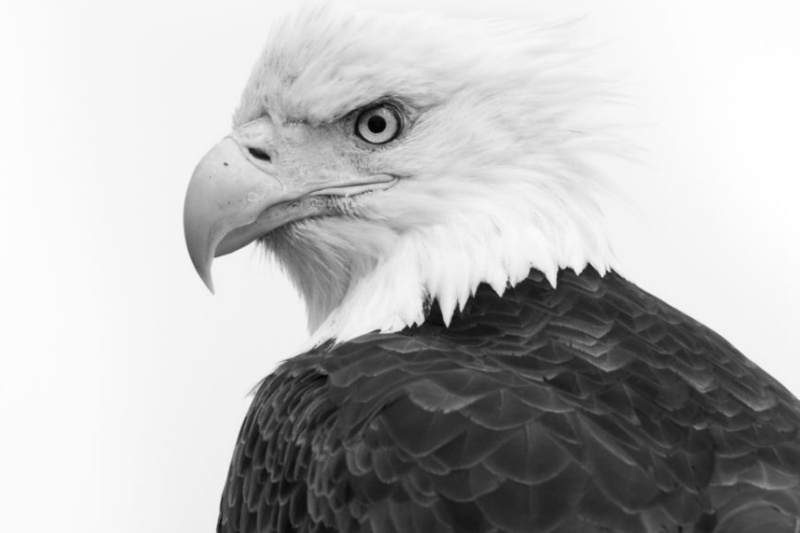An iconic symbol of the United States Of America, the Bald Eagle is a large bird that demands respect. They can fly up to 30 mph and dive close to 100 mph! Bald Eagles don’t have vocal cords. The high pitch shrills are made from air passing the bones in the neck in an area where the windpipe separates before going to the lungs. Interested in learning more? Here are some interesting facts about bald eagles.

Bald Eagle Sizes
An average adult bald eagle weighs around 9 pounds and stands about 3 feet tall. The female bald eagles are actually larger than males. Females have a height that is about 3 feet and has a wingspan of 6 ½ feet to 7 ½ feet across. Males have a height of 2 ½ feet to 3 feet with a wingspan of 6 feet to 7 feet across.
Physical Description of Bald Eagles
Bald eagles have a brown body with a white head and tail. The bald eagles beak and feathers are made of keratin, which is the same stuff that makes up human hair and nails. Their beak has a hook at the tip with an upper mandible behind it that is used to slice thick skin. Not only do bald eagles use their beaks for eating they also use it as a weapon, to care for their mate’s feathers, and the feed their babies.
Bald Eagle Nest
Bald eagles have specific characteristics that they look for when choosing a tree to nest in. Their ideal trees have a large “V” shaped area that can provide a lot of room for them to build in. Bald Eagle nests are usually found in oak, hemlock and poplar. The nest can be found near the top of the tree. The largest nest that has ever been recorded was 6.1 meters deep, 2.9 meters wide and had a weight of nearly 3 tons.
Bald Eagle Eyesight
The eyesight of bald eagles is 4 to 7 times better than humans. Bald eagles can see things that are up to a mail away. With having such great eyesight, this allows them to search for food from high up in the sky or from being perched on a tree or cliff.
Few More Facts about Bald Eagles
- Bald Eagles are so named because “balde” is an Old English term signifying “white.”
- It’s illegal to “pursue, shoot, shoot at, poison, wound, kill, capture, trap, collect, molest or disturb” (16 U.S.C. 668c; 50 CFR 22.3) a bald eagle in the U.S.
- In the U.S., if you find a bald eagle feather on the ground, you need permission to pick it up.
- A Dutch police force is training eagles to combat drones.
- By weight, birds such as eagles, hawks, and falcons have eyes larger than their brains.


